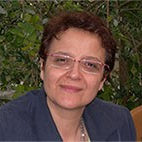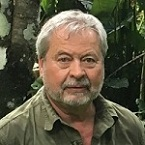Remote Sensing, Spatial Analysis, and GIS for Natural and Cultural Heritage Documentation, Monitoring, and Preservation
A special issue of Remote Sensing (ISSN 2072-4292). This special issue belongs to the section "Remote Sensing in Geology, Geomorphology and Hydrology".
Deadline for manuscript submissions: closed (31 May 2020) | Viewed by 98202
Special Issue Editors
Interests: remote sensing; satellite time series analysis; risk monitoring; archaeology; fire
Special Issues, Collections and Topics in MDPI journals
Interests: remote sensing archaeology, digital cultural and natural heritages, physical geography
Interests: geomatics; optical remote sensing; pixel-based and geographic object-based image analysis (GEOBIA); UAV applications; digital photogrammetry and spatial analysis; methodologies for multi-temporal analysis (change detection) and classification of optical satellite sensor data aimed at environmental, agricultural and cultural heritage monitoring and documentation
Special Issues, Collections and Topics in MDPI journals
Interests: planning for the management and interpretation of archaeological sites and landscapes; the use of aerial and satellite remote sensing for archaeological research and resource protection
Special Issue Information
Dear Colleagues,
In light of recent developments of both sensors and data availability, remote sensing for spatial analysis and GIS applications have attracted increasing attention, becoming fundamental elements in investigations of Earth observation for a wide spectra of application fields, for example, environmental monitoring, urban planning, civil infrastructures, built environment water resource management, marine ecosystems, agriculture, cultural heritage, geo-hazards and disaster management, and security.
However, innovative algorithms and methodologies, as well as new data exploitation strategies, are needed to serve these applications and exploit, as much as possible, the ever-growing quantity of geospatial data today available. A significant computation challenge is how to convert these datasets into accurate, meaningful information. There are still some open challenges, from the extraction of relevant information to the integration of diverse data sources to the efficient storage, management, and analysis of spatial and non-spatial data, which calls for innovative modelling, concepts, and interpretation on any scale, from local to global.
This Special Issue will report the latest advances and trends in the field of remote sensing for spatial analysis and GIS applications addressing both original developments, new applications. and practical solutions to open questions. Topics for this Special Issue include, but are not limited to, the following:
- Remote and distributed sensing for heritage site analysis
- Spatial modelling and GIS applications for cultural resources monitoring and enhancement
- Earth science and social science for cultural resource management
- Remote sensing and geoinformatics for the conservation and promotion of cultural heritage
- Earth big data for monitoring and mapping of archaeolandscapes
- New tools and methods for multi-temporal analysis of landscapes
- Fusion and integration of data and information from multiple sources
- Data integration for geo-hazards risk mitigation and disaster management
- Integration of RS with climate and metereological data and forecasting
- Earth observation for the sustainable development goals
Dr. Rosa Lasaponara
Dr. Xinyuan Wang
Dr. Eufemia Tarantino
Dr. Douglas C. Comer
Guest Editors
Manuscript Submission Information
Manuscripts should be submitted online at www.mdpi.com by registering and logging in to this website. Once you are registered, click here to go to the submission form. Manuscripts can be submitted until the deadline. All submissions that pass pre-check are peer-reviewed. Accepted papers will be published continuously in the journal (as soon as accepted) and will be listed together on the special issue website. Research articles, review articles as well as short communications are invited. For planned papers, a title and short abstract (about 100 words) can be sent to the Editorial Office for announcement on this website.
Submitted manuscripts should not have been published previously, nor be under consideration for publication elsewhere (except conference proceedings papers). All manuscripts are thoroughly refereed through a single-blind peer-review process. A guide for authors and other relevant information for submission of manuscripts is available on the Instructions for Authors page. Remote Sensing is an international peer-reviewed open access semimonthly journal published by MDPI.
Please visit the Instructions for Authors page before submitting a manuscript. The Article Processing Charge (APC) for publication in this open access journal is 2700 CHF (Swiss Francs). Submitted papers should be well formatted and use good English. Authors may use MDPI's English editing service prior to publication or during author revisions.
Keywords
- remote sensing for spatial analysis and GIS applications
- big Earth data
- data exploitation strategies
- spatial and non-spatial data integration
- Earth observation for sustainable development goals







